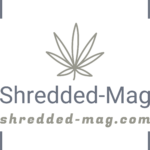Get Started with Dermal Fillers – Book with Dr. Laura Geige Now
## NonSurgical Options
When considering non-surgical options for facial rejuvenation, affordability often takes center stage.
While a traditional facelift comes with a hefty price tag, numerous alternatives exist that can deliver noticeable results without breaking the bank.
Here’s a breakdown of some of the most cost-effective non-surgical facelift options:
* **Chemical Peels:**
These treatments involve applying a chemical solution to the skin, which exfoliates and promotes cell renewal.
Superficial peels are the least expensive and address minor wrinkles, uneven tone, and sun damage.
* **Microneedling:** This technique utilizes tiny needles to create controlled punctures in the skin.
These micro-injuries stimulate collagen production, leading to firmer, smoother skin.
Microneedling can help with fine lines, acne scars, and overall skin texture improvement.
* **Radiofrequency (RF) Treatments:** RF energy heats the deeper layers of the skin, stimulating collagen and elastin production.
This can result in tightened skin, reduced wrinkles, and improved facial contours.
Different types of RF devices exist, with varying costs depending on technology and treatment area.
* **Ultherapy:** This FDA-approved procedure uses ultrasound energy to lift and tighten the skin.
It targets deeper tissues than RF, providing noticeable results for sagging jowls, brows, and neck skin.
Ultherapy tends to be more expensive than other non-surgical options but can offer longer-lasting outcomes.
* **Dermal Fillers:** These injectables are made from hyaluronic acid, a substance that naturally occurs in the body.
They add volume to areas like cheeks, lips, and under the eyes, plumping up skin and reducing the appearance of wrinkles.
Filler injections can provide immediate results but require repeat treatments for maintenance.
The cost of these non-surgical facelift options varies depending on factors such as:
*
Geographic location
*
Provider’s experience and expertise
*
Number of treatments required
It’s essential to consult with a qualified dermatologist or plastic surgeon to determine the best option for your individual needs and budget. They can assess your skin type, concerns, and goals to recommend a customized treatment plan that delivers optimal results.
Thread Lifts
Ultherapy
## Minimally Invasive Procedures
Ultherapy is a popular minimally invasive procedure often considered a “lunchtime facelift” because it requires no surgery, downtime, or anesthesia.
It utilizes focused ultrasound energy to target and lift the deeper layers of the skin (the SMAS), which is responsible for supporting the facial structure. By stimulating collagen production in these deeper tissues, Ultherapy can gradually tighten and lift sagging skin, resulting in a more youthful and defined appearance.
Here’s how Ultherapy works:
-
During the procedure, a handheld device emits focused ultrasound energy beams into specific depths of the skin.
-
These ultrasound waves heat up the targeted tissues without damaging the surface layer of the skin.
-
This heat triggers a natural healing response, leading to the production of new collagen and elastin fibers.
-
Over several months, this newly formed collagen tightens and lifts the skin, resulting in noticeable improvement in facial contours.
Ultherapy can address various signs of aging, including:
-
Loose or sagging skin on the forehead, eyebrows, cheeks, and neck
-
Fine lines and wrinkles
-
A loss of jawline definition
Book a Dermal Filler Appointment with Dr. Laura Geige at It’s Me and You Clinic
Compared to traditional surgical facelifts, Ultherapy offers several advantages:
-
No incisions or scarring
-
Minimal downtime and recovery time
-
Non-surgical and less invasive
Arrange a Dermal Filler Appointment with Dr. Laura Geige
However, it’s important to note that Ultherapy is not a permanent solution. The results gradually improve over several months and typically last for 1 to 2 years, depending on individual factors.
Laser Skin Resurfacing
## Recovery Considerations
Laser skin resurfacing is a popular cosmetic procedure that uses a laser to remove the outermost layers of skin, revealing smoother, younger-looking skin underneath.
While not technically a facelift, it can provide significant facial rejuvenation by addressing wrinkles, fine lines, uneven texture, acne scars, and sun damage.
The procedure involves directing a precisely controlled beam of light onto the skin, which vaporizes the targeted tissue. This stimulates collagen production in the deeper layers of skin, leading to tighter, firmer skin over time.
Laser resurfacing comes in two main types: ablative and non-ablative.
Ablative lasers remove deeper layers of skin, resulting in more dramatic improvements but a longer recovery period. Non-ablative lasers target the upper layers of skin, causing less downtime but less noticeable results.
Recovery from laser skin resurfacing can vary depending on the type of laser used, the extent of treatment, and individual healing abilities.
Here’s a general timeline:
Immediately after the procedure: The treated area will be red, swollen, and tender.
Days 1-3: Inflammation peaks, with potential for oozing or crusting. It is crucial to keep the area clean and moisturized as directed by your doctor.
Week 1-2: Crusts begin to shed, revealing pinker skin underneath. The area may still be sensitive.
Week 2-4: Skin continues to heal, with redness gradually fading. Makeup can typically be applied after this period.
Weeks 4-6: Most healing is complete, and the final results become more apparent.
It’s important to protect your skin from sun exposure during recovery and for the long term to maintain your results. Your doctor will recommend sunscreen with at least SPF 30.
While laser skin resurfacing can be an effective way to achieve a more youthful appearance, it is essential to consult with a qualified dermatologist or plastic surgeon to determine if it’s right for you and to discuss your individual recovery expectations.
Downtime Expectations
Risks and Side Effects
Reimagining Journalism One One Three Online Clover Design Online Elizabeth Joy Photo
- Can You Build A Tolerance To THC Soda? What You Need To Know - May 9, 2025
- Botox For Dimpled Chin In Sloane Square, London - May 9, 2025
- Lip Flip Treatment Near Worcester Park, Surrey - May 8, 2025
